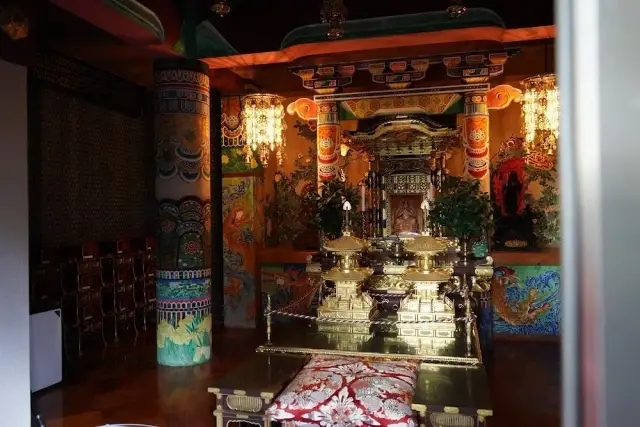https://www.dekitabi.com/itinerary/fukushima-city-essential-tour
Nestled in the heart of Fukushima Prefecture, the region offers a fascinating array of historical and cultural sites. From serene temples to elegant residences, each location provides a unique glimpse into Japan’s rich heritage. In this guide, we’ll explore five must-visit sites: Daishoji Temple, the Former Horikiri Residence, Fukushima Prefecture Gokoku Shrine, Fukushima Inari Shrine, and Okura Residence.
Daishoji Temple: A Beacon of Tranquility

https://www.dekitabi.com/attraction/daishoji-temple-fukushima
Daishoji Temple, located in the scenic city of Fukushima, stands as a testament to Japan’s spiritual and architectural heritage. Founded in the 8th century, this temple is renowned for its tranquil atmosphere and traditional wooden structures. Visitors are greeted by the temple’s serene gardens and elegant pagoda, which provide a peaceful retreat from the bustle of modern life.
The temple is particularly famous for its beautifully crafted statues and the ancient bell that has been rung for centuries. The surrounding grounds are perfect for a leisurely stroll, offering picturesque views and a sense of calm that embodies the essence of Japanese Zen Buddhism. For those interested in spiritual practices, Daishoji Temple often hosts meditation sessions and traditional ceremonies.
Former Horikiri Residence: A Glimpse into Edo-Era Aristocracy

https://www.dekitabi.com/attraction/old-horikiri-house-fukushima
The Former Horikiri Residence offers an enchanting look into Japan’s aristocratic past. This well-preserved home of the Horikiri family, influential figures during the Edo period, showcases the opulence and elegance of high society. The residence is a masterpiece of traditional Japanese architecture, with its spacious tatami rooms, intricately designed sliding doors, and beautiful garden.
Visitors can explore the meticulously maintained interiors, which include antique furnishings and historical artifacts that provide insights into the daily life of the aristocracy. The surrounding garden, with its serene pond and carefully curated flora, reflects the aesthetic principles of Japanese landscape design. A visit to the Former Horikiri Residence is a journey back in time, offering a rare glimpse into the luxurious lifestyle of Japan’s bygone era.
Fukushima Prefecture Gokoku Shrine: A Sanctuary of History and Reverence

https://www.dekitabi.com/attraction/fukushima-gokoku-shrine
The Fukushima Prefecture Gokoku Shrine, dedicated to the spirits of those who have served in the military, stands as a symbol of honor and remembrance. This shrine, located in the heart of Fukushima City, is renowned for its striking architectural style and historical significance. Established to pay tribute to the bravery and sacrifices of soldiers, the shrine features traditional Shinto design elements, including a grand torii gate and a beautifully adorned main hall.
Visitors to the Gokoku Shrine can participate in various Shinto rituals and offerings, which are deeply rooted in Japanese tradition. The shrine’s serene atmosphere and historical importance make it a significant site for both locals and tourists seeking to understand Japan’s cultural heritage and spiritual practices.
Fukushima Inari Shrine: The Enigmatic Beauty of Inari Worship

https://www.dekitabi.com/attraction/fukushima-inari-shrine
Fukushima Inari Shrine, a sacred site dedicated to the deity Inari, is renowned for its striking torii gates and spiritual ambiance. This shrine is part of the larger network of Inari shrines across Japan, which are known for their distinctive red gates that form a path leading up to the shrine’s main building. The vibrant colors and intricate carvings of the torii gates create a visually captivating experience for visitors.
The shrine grounds are adorned with numerous fox statues, which are believed to be the messengers of Inari. As visitors walk through the winding paths of the shrine, they can experience a sense of mystical wonder and connection with Japan’s Shinto traditions. Fukushima Inari Shrine is not only a place of worship but also a site of cultural significance and natural beauty.
Okura Residence: Elegance and Tradition Preserved

https://www.dekitabi.com/attraction/oguratei
The Okura Residence, another gem in Fukushima’s cultural landscape, is a beautifully preserved example of traditional Japanese architecture. This historic home, known for its elegant design and meticulous craftsmanship, offers visitors a chance to explore the rich cultural heritage of the region. The residence features traditional tatami mat rooms, intricate wooden carvings, and a serene garden that embodies the principles of Japanese aesthetics.
Exploring the Okura Residence provides a unique opportunity to appreciate the historical and architectural significance of traditional Japanese homes. The residence’s carefully maintained interiors and picturesque surroundings offer a window into the refined tastes and lifestyles of Japan’s historical elite.
Conclusion
Fukushima Prefecture is a treasure trove of historical and cultural sites, each offering a unique perspective on Japan’s rich heritage. Daishoji Temple, the Former Horikiri Residence, Fukushima Prefecture Gokoku Shrine, Fukushima Inari Shrine, and Okura Residence each provide a distinct experience, from serene spiritual retreats to elegant glimpses into Japan’s aristocratic past. Visiting these sites allows travelers to immerse themselves in the cultural tapestry of Fukushima, discovering the beauty and history that make this region a fascinating destination.


Leave a Reply